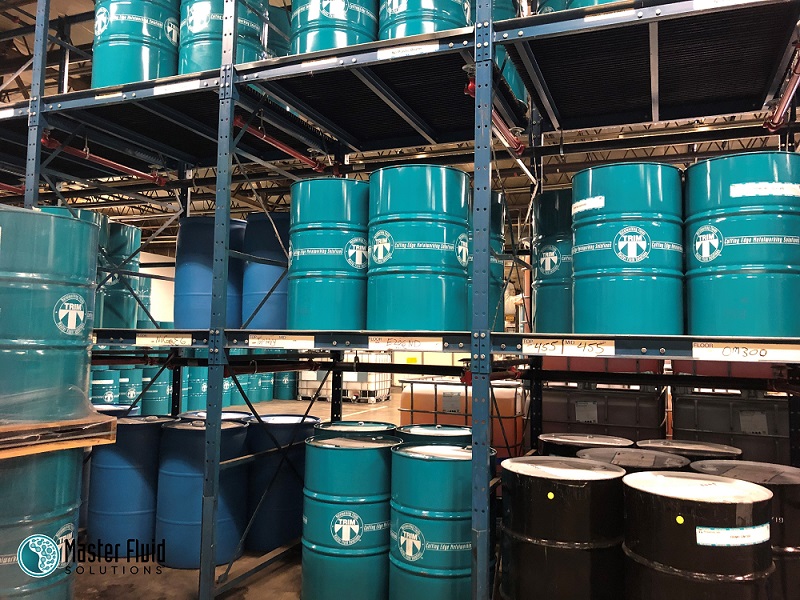Properly maintaining coolant is the key to increasing fluid and tool life. It’s also critical to reducing costs and machine downtime and increasing productivity. Proper storage of cutting fluid can have a similar impact on your workshop, too.
Get the most out of coolant by optimizing storage for your operation. Here’s where to start:
Storage Best Practices for Extending Coolant Life
The TRIM® is engineered to maintain stability, prevent rancidity, and resist bacteria growth — even in long-term storage. However, coolant concentrate must be kept in the proper condition to fully maximize these benefits.
Keep drums, totes, and pails indoors, covered, and out of direct sunlight. While they don’t need to be kept in temperature-controlled environments, they cannot be exposed to extreme heat or cold — especially freezing conditions, which can degrade water-miscible cutting fluids.
Keep lids on containers and properly sealed to prevent moisture ingress and contamination. When lids are open for dispensing or transferring fluid to another vessel, make sure safeguards are in place to prevent water, dirt, dust, and other contaminants from getting into the container with the concentrate.
Any containers used for interim storage should be inspected and thoroughly cleaned and labeled prior to adding concentrate to them. Otherwise, moisture, fungus, bacteria, or other pollutants might ruin the coolant concentrate, resulting in replacement and increasing coolant and operating costs.
Proper Storage for Inventory Management
Storing coolant can be organized strategically as a means to keep track of and manage inventory. If concentrate is manually dispensed directly out of large drums, it can be difficult to see how much is left in the container, especially if operators don’t keep logs of how much they’ve used. Spill containment systems should be used as needed and required.
Without proper storage workers may use an incorrect chemical by accident or, give the false impression that there’s more concentrate in stock than in reality. If an operation is forced to temporarily suspend while waiting for a shipment of coolant, profit and productivity will take a significant hit.
That’s why it’s important to optimize storage and inventory protocols as a way to keep track of coolant concentrate. For example, establish drums as your reserve supply of coolant concentrate, only allowing operators to dispense from a smaller container instead. When a drum runs empty after refilling a pail for example, that signals it’s time to order more fluid before the dispensing container runs empty. Limit access to the drum reserves, or keep detailed dispensing logs, so management always knows how much is in stock.
Additionally, many fluids have a limited shelf life. Organize storage in a first-in, first-out configuration, so the oldest inventory is always used first.
Proper Storage for Efficiency
Assess your shop size and floor layout to determine how and where your coolant concentrate should be stored.
Some operations benefit from centralized rack storage that all operators dispense from, regardless of how many different types of coolants are used. Either way, make sure containers are clearly labeled with proper GHS labeling.
For larger shops that require specialized coolants for different operations, store cutting fluid nearest to the machine and workstations where they will be used, so operators don’t have to transport fluid across a large and busy floor every time they need more.
Plus, when storing coolant concentrate in drums, place the containers on their sides or cover the drums so that water, oil, dirt, and moisture don’t collect on top of the lid. Side storage can make dispensing easier in certain cases. If standing storage of drums is the only option, place a gradient underneath. The slight tilt will lessen the amount of moisture that can collect on top of the lid.
Master Fluid Solutions® offers a full range of consulting services for how to best optimize coolant in your operation, including storage. For more information or to schedule a site visit, call +1 800-537-3365, or email us at info@masterfluids.com.

